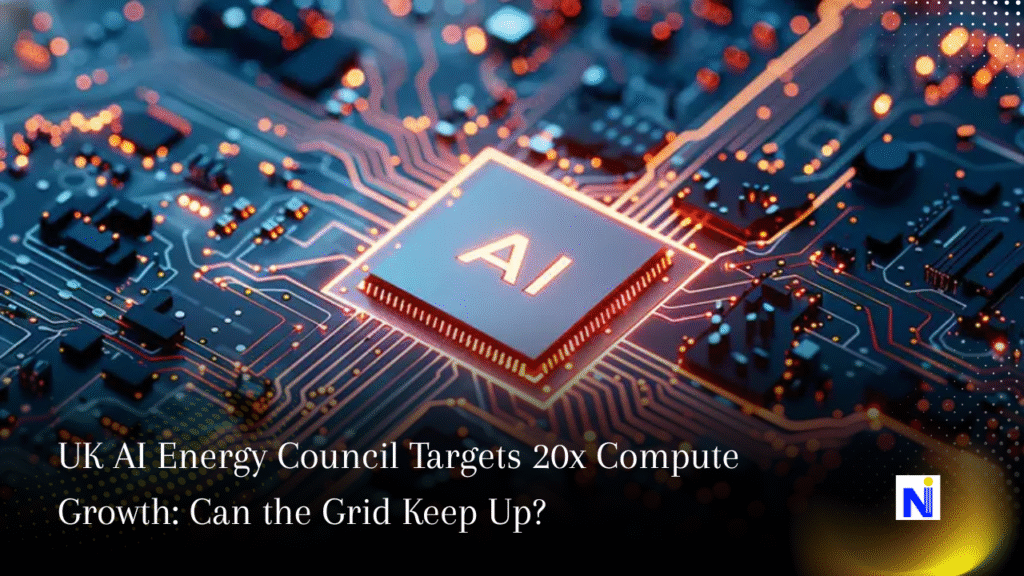
How the AI Energy Council is Mapping the UK’s AI-Powered Energy Future
Imagine a world where your neighborhood is home to the next big AI breakthrough—whether it’s personalized medicine, smarter logistics, or even climate solutions. Now imagine that same future being cut short because the power grid can’t keep up. That’s the concern on the table today as the UK AI Energy Council meets to discuss a transformative increase in national compute capacity.
Chaired by Technology Secretary Peter Kyle and Energy Secretary Ed Miliband, today’s meeting aims to forecast and plan for a twenty-fold increase in compute power needs within just five years—a number as ambitious as it is critical.
Let’s unpack what this means for the future of AI in the UK, the energy grid, and your daily life.
Understanding the AI Energy Council: Who’s at the Table?
This isn’t your average conference call. The AI Energy Council brings together the big hitters:
- UK energy providers
- Leading tech companies
- The National Energy System Operator (NESO)
- Ofgem, the UK’s energy regulator
- Academic and AI industry experts
The Council was formed earlier this year as part of the government’s AI Opportunities Action Plan, backed by a hefty £2 billion investment. Their goal: ensure that the UK’s energy system is ready to power the future of AI development responsibly and sustainably.
“We are clear-eyed on the need to power this golden era for British AI through responsible, sustainable energy sources,” said Peter Kyle.
The Core Issue: Compute Capacity and Its Energy Appetite
At the heart of AI innovation is compute capacity—the raw processing power needed to train, operate, and scale complex AI systems.
Why It Matters:
- Compute = AI’s Engine: Think of compute as the fuel-injected V8 under AI’s hood.
- Energy Hungry: High-performance computing systems demand massive energy inputs.
- National Competitiveness: Without scalable compute infrastructure, the UK risks falling behind AI powerhouses like the U.S. and China.
Forecasting a 20x Increase
The Council expects UK compute demand to increase twentyfold over the next five years. That’s not a typo. We’re talking quantum leaps in energy needs—not only from AI startups but also from sectors like:
- Healthcare (e.g., genomics & drug discovery)
- Aerospace (sustainable flight simulations)
- Finance (fraud detection & algorithmic trading)
- Climate modeling and sustainability tech
AI Growth Zones: Supercharging the UK’s Digital Landscape
Another big agenda item today: the future of AI Growth Zones. These are designated innovation hubs the government aims to roll out across the UK to spur AI development and economic growth.
What’s in an AI Growth Zone?
- High-speed compute clusters
- Enhanced grid infrastructure
- Academic-industry partnerships
- Local job creation
The AI Energy Council is assessing the power requirements of these zones—because if the grid can’t handle the load, the entire initiative could stall.
“Bringing together the biggest players in AI and energy helps us build a clean power system to meet the demands of tomorrow’s technology,” said Ed Miliband.
Removing the Bottleneck: Grid Connection Reforms
Currently, more than 400GW of capacity is trapped in a grid connection queue—a traffic jam that’s preventing new AI and clean tech projects from plugging in.
With final approvals pending from Ofgem, the reforms could:
- Unleash up to 400GW of latent capacity
- Accelerate time-to-grid for AI infrastructure
- Boost investor confidence in UK-based AI operations
Comparison Table: Before and After Proposed Reforms
| Criteria | Current State | Post-Reform Vision |
|---|---|---|
| Grid Connection Wait Time | Up to 10 years | Less than 2 years |
| Available Capacity | Severely restricted | Up to 400GW unlocked |
| AI Project Launch Timeline | Slow and uncertain | Fast and streamlined |
Clean Power + AI: The UK’s Dual Challenge
Balancing massive compute growth with climate commitments is no small feat. Fortunately, AI itself can help build a smarter, more efficient energy system.
How AI Can Help Energy:
- Predictive demand modeling
- Grid fault detection and auto-response
- Battery storage optimization
- Renewable energy forecasting
This synergy of AI and energy innovation could place the UK at the forefront of the clean energy revolution.
Realistic Goals, Real-World Impact
Let’s break down what this all means for everyday Brits:
- More Jobs: AI Growth Zones could generate thousands of high-tech, high-wage jobs.
- Smarter Infrastructure: AI-backed power systems mean fewer blackouts, more stability.
- Greener Energy: AI helps us hit net-zero goals without slowing tech innovation.
- Global Leadership: With strategic planning, the UK can set global AI standards.
“This is the infrastructure moment for British AI,” said one council participant.
The Grid is the Gateway
The decisions made at the AI Energy Council won’t just affect the tech industry—they’ll shape the UK’s economic, environmental, and digital future. With compute capacity poised to skyrocket and energy grids under pressure, collaborative foresight is essential.
In a nutshell: AI can’t grow without power. And power can’t scale without planning.
We’ll be watching closely to see how the council’s recommendations evolve. Want to stay updated on AI and energy in the UK?
➡️ Share your thoughts in the comments. How should we balance innovation and sustainability?





